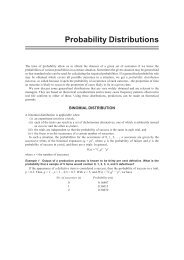International-Business-Dr-R-Chandran-E-book
International-Business-Dr-R-Chandran-E-book
International-Business-Dr-R-Chandran-E-book
You also want an ePaper? Increase the reach of your titles
YUMPU automatically turns print PDFs into web optimized ePapers that Google loves.
prices in to account. It takes the price<br />
of goods as being determined by the<br />
production condition alone<br />
It takes no note of production factor<br />
in the two countries<br />
236<br />
<strong>International</strong> <strong>Business</strong>- <strong>Dr</strong>. R. <strong>Chandran</strong><br />
relative factor prices, which<br />
influence the relative prices of goods.<br />
It assumes a linear homogeneous<br />
production function of one degree<br />
PURCHASING POWE PARITY AND IPACT ON TRADE<br />
The estimates of per capita income in various countries are not strictly<br />
comparable because they are based on conversion of per capita income of a<br />
country as measured in its local standard money unit (the rupee in India) to a<br />
common currency denominator (US $ in this case), the conversion being<br />
based on the official exchange rates. The official exchange rates do not<br />
reflect the purchasing power of different countries in their respective<br />
counties. Thus, India may have had a low per capita income e.g., US $ 420<br />
in 2002 can buy in the USA due to relatively lower prices in India. Hence,<br />
the comparison of national and per capita incomes do not reflect the true<br />
value or purchasing power or command over goods and services in their<br />
respective countries.<br />
A change in exchange rate will also change the per capita income of a<br />
country as expressed in foreign currency. For example, when India devalued<br />
its currency against the US dollar, even when there was no change in the<br />
economy. This is illustrated by the following example:<br />
In India in 1990: INR 21 = US<br />
$ 1<br />
After devaluation in march-April 1992: INR 29 = US<br />
$ 1<br />
After 10 years, in 2002: INR 46 = US<br />
$ 1<br />
After 5 years in 2007: INR 40 = US $<br />
1<br />
The practice of devaluation and depreciation of local currency against the<br />
US $ was very common in all developing countries and less developed<br />
nations, over the past two decades. Surprisingly, for the first time, Indian<br />
rupee is appreciating against dollar in 2007.<br />
The competitive advantage of Nations<br />
Only for Private Circulation





